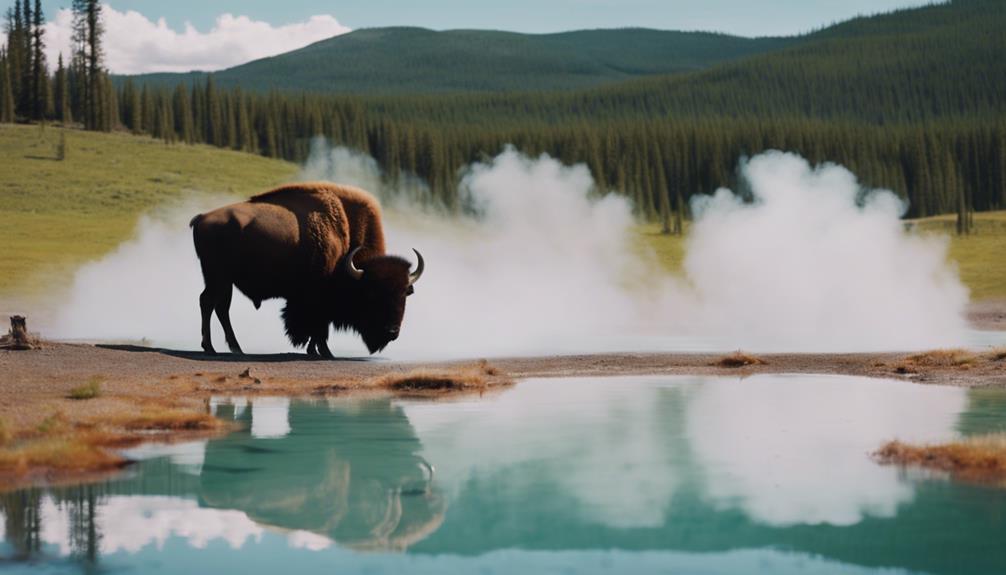Did you know that sand is not just for building castles on the beach? It holds a myriad of secrets waiting to be discovered. In this article, we will take you on a journey through the fascinating world of sand, revealing its origins, different types, and surprising uses.
You’ll uncover the vital role sand plays in ecosystems and delve into the captivating science behind its formation processes. Prepare to be amazed by fun and interesting sand trivia that will make you feel like a true connoisseur of this remarkable substance.
Key Takeaways
- Sand is formed from the erosion of rocks and minerals, with wind, water, and weathering shaping the world’s sandy landscapes.
- Sand comes in a variety of colors and is used as a building material for construction projects, as well as in the production of glass, ceramics, and pottery.
- Sand provides habitats for organisms and serves as a breeding ground for many species, particularly in sandy seabeds and sand dunes.
- Sand acts as a natural filter, enriches soil with essential minerals, stores carbon dioxide, and plays a crucial role in nutrient cycling in coastal ecosystems.
The Origins of Sand
Did you know that sand is formed from the erosion of rocks and minerals? The history of sand formation is a fascinating tale of nature’s artistry.
Over millions of years, wind, water, and weathering have worked together to shape the world’s sandy landscapes. From towering deserts to pristine beaches, each grain of sand carries with it a geological significance.
As rocks break down into smaller particles, they are carried away by rivers or blown by the wind. These tiny fragments then undergo further abrasion and erosion, resulting in the fine granules we call sand.
This process not only creates breathtaking natural wonders but also provides vital habitats for countless organisms. So next time you feel the soft grains beneath your toes, remember that you are stepping on a piece of Earth’s ancient story.
Different Types of Sand
There are various types of sand found all over the world. From pristine white beaches to vibrant pink shores, sand comes in a dazzling array of colors.
But did you know that sand is also an essential building material? Its versatility and abundance make it a valuable resource for construction projects. Whether it’s used as a foundation for buildings or mixed with cement to create concrete, sand plays a crucial role in shaping our built environment.
Imagine towering skyscrapers and majestic bridges, all made possible by this humble substance. Sand not only provides strength and stability but also adds beauty to our structures.
The Role of Sand in Ecosystems
Imagine a world where sand is not just a grainy substance beneath your feet, but a vibrant habitat teeming with life.
Sand, often underestimated, plays a crucial role in ecosystems as it provides homes for countless organisms and serves as an essential breeding ground.
Additionally, sand acts as a powerful force in nutrient cycling, ingeniously replenishing the earth’s resources and sustaining the delicate balance of life.
It is time to appreciate the true significance of this seemingly ordinary substance and unlock its immense potential for ecological harmony.
Sand as Habitat
You’ll be amazed to know that sand serves as a unique habitat for various organisms. It’s not just an ordinary granular material; it is home to a diverse range of marine life.
Beneath the water’s surface, you’ll find countless creatures burrowing in the sandy seabed, from tiny worms to crustaceans and even certain types of fish.
Sand dunes, on the other hand, are fascinating formations created by wind and sediment movement over time. These majestic structures provide shelter and protection for many plants and animals, including specialized species adapted to the harsh conditions.
They offer a sense of belonging to these organisms, allowing them to thrive in an otherwise challenging environment.
Sand and Nutrient Cycling
Did you know that sand plays a crucial role in the cycling of nutrients in coastal ecosystems? It may seem like just tiny grains, but sand has a big impact on the fertility of soil and the sequestration of carbon.
Here’s how:
-
Nutrient filtration: Sand acts as a natural filter, allowing water to pass through while trapping nutrients. This helps prevent nutrient runoff and keeps them available for plants to use.
-
Soil enrichment: As sand breaks down over time, it releases essential minerals into the soil, improving its fertility. This enables plants to grow stronger and healthier, creating a thriving ecosystem.
-
Carbon storage: The porous nature of sand allows it to store carbon dioxide from the atmosphere, helping mitigate climate change. By sequestering carbon in coastal environments, sand becomes an important tool in combating global warming.
Next time you step onto a sandy beach, remember its hidden power as a nutrient cyclist and carbon sink.
Surprising Uses for Sand
Sand is often used as an abrasive material in sandblasting. But did you know that sand can also be a source of creativity and healing?
Sand art, with its intricate patterns and vibrant colors, allows you to express yourself in a unique and beautiful way. It’s a form of art that brings people together, fostering a sense of belonging and connection.
And when it comes to therapy, sand has surprising benefits too. Sand therapy involves using a tray filled with sand to create scenes or landscapes. It provides a safe space for self-expression and exploration of emotions, helping individuals heal from trauma or find inner peace.
The Science Behind Sand
When it comes to the science behind sand, it’s fascinating to learn about its composition and how it affects various natural processes. Here are three incredible facts that will open your eyes to the wonders of sand:
-
Sand erosion: Picture mighty waves crashing against a sandy shore, slowly wearing away the grains of sand. The relentless force of water, wind, and even ice can shape landscapes over time through erosion. It’s like nature’s sculptor delicately carving intricate patterns in the surface.
-
Sand dunes formation: Imagine vast desert landscapes with towering mounds of sand stretching as far as the eye can see. These mesmerizing formations occur when wind carries loose particles and deposits them in undulating hills, creating breathtaking vistas that seem straight out of a dream.
-
Sand’s secret ingredient: Did you know that sand is mostly composed of tiny fragments of rocks and minerals? From quartz to feldspar, these microscopic particles come together to form the beautiful beaches we love to explore.
The science behind sand is truly remarkable. It reminds us how interconnected we are with our environment and how every grain plays a part in shaping our world.
Fascinating Sand Formation Processes
One of the most fascinating aspects of sand formation is how wind and water work together to shape breathtaking landscapes.
When you stand atop a towering sand dune, it’s hard not to be in awe of the forces that created such a magnificent structure.
As the wind blows across sandy surfaces, it picks up loose grains and carries them along, causing erosion in some areas while depositing sediment in others.
These constant movements and interactions between wind and water create ever-changing patterns on the surface of the dunes, making each one unique.
It’s like witnessing nature’s own art gallery unfold before your eyes.
The intricate dance between wind and water is what gives rise to these mesmerizing sand formations, reminding us of our place within this vast world.
Fun and Interesting Sand Trivia
It’s amazing to learn about the various and surprising ways that sand can be used in everyday life. Here are three fun and interesting facts about sand that will blow your mind:
-
Unusual Sand Formations: Picture yourself standing on a beach, surrounded by stunning sand formations. From towering sand dunes that seem to touch the sky, to intricate ripple patterns left behind by the wind, nature has an incredible way of shaping our world with sand.
-
Sand as a Natural Exfoliant: Imagine treating your skin to a luxurious exfoliating experience right at home. Sand can be found in many skincare products due to its gentle yet effective exfoliating properties. It helps remove dead skin cells, leaving your skin feeling rejuvenated and smooth.
-
Sandbox Therapy: Close your eyes and imagine sinking your hands into a sandbox filled with soft, warm sand. This simple act can provide therapeutic benefits, reducing stress and promoting relaxation.
Sand truly holds endless possibilities; from creating beautiful landscapes to providing natural beauty treatments and even offering soothing therapy sessions. Embrace the magic of this humble grain and let it inspire you in unexpected ways!
Frequently Asked Questions
How Is Sand Formed?
Sand is formed through various processes, such as weathering, erosion, and deposition. These geological events occur over millions of years, resulting in the creation of sand. It holds great importance in understanding Earth’s history and shaping our landscapes.
What Are the Different Colors of Sand and What Causes Them?
Sand comes in a variety of colors, like red, black, and white. The color is determined by the minerals present. Artists use colored sand for unique art creations. Sand dunes are formed by wind and play an important role in ecosystems.
What Is the Largest Desert in the World?
The largest desert in the world is the Antarctic Desert. It may not have sand formations like other deserts, but its vast icy landscape makes it a unique and remarkable desert.
Can Sand Be Used for Water Filtration?
Yes, sand can be used for water filtration. It has pros like affordability and effectiveness in removing impurities. However, cons include clogging and the need for regular maintenance. Sand mining can harm ecosystems by causing erosion and habitat destruction.
Are There Any Endangered Species That Rely on Sand for Their Survival?
Yes, there are endangered species that rely on sand for their survival. Sand provides habitat and nesting grounds for various marine animals like sea turtles and shorebirds. Their existence is intertwined with the sandy environment.
Conclusion
Congratulations on completing the journey through the world of sand! You’ve uncovered a treasure trove of fascinating facts and mind-boggling processes.
From its origins to its diverse types, sand never ceases to amaze. Its vital role in ecosystems and surprising uses make it even more intriguing. The science behind sand formation is truly captivating.
Remember these fun trivia tidbits for your next social gathering. Now that you’ve delved into the depths of sand, you possess a visionary understanding of this humble yet extraordinary substance.
Keep exploring and embracing the wonders around us!





